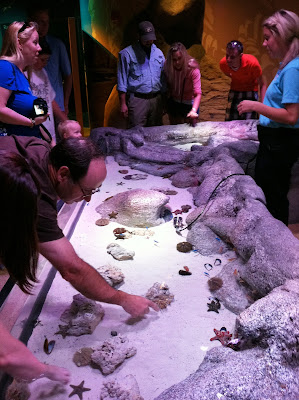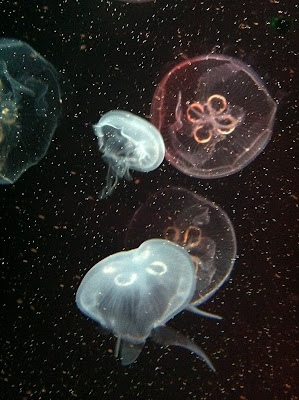1) The touch pond. This one should be pretty self explanatory, because, really, how many chances do you get to touch a star fish? Or a spiny urchin or a limpit? It was also funny to see the difference in the ways people approached the touch pond - some dove their hands right in to pick up and feel every creature while others were more hesitant to put their hand in the water.
2) The jellyfish tank. We talked about this in our Wednesday post, but the jellyfish tank really was one of the coolest things we've seen. It just sucked you right in, with the lights and the soft music playing in that section. The jellyfish looked so etheral, just floating there. Really and truly, we would have spent hours just staring at that exhibit if we could have.
3) The underwater tunnel. There were multiple reasons why we loved this part of the aquarium For one, having the fish swim over and around you reminded us of how it feels to go snorkeling or scuba diving (and gave us a craving to back into the sea)! Two, it's fun to see the fish from below, rather than just from the side or above as with many aquarium tanks. And three, even though there was thick glass between us and the fish, it felt like we were really close to them. One of the best parts of our trip was taking pictures of a manta ray and then turning around to see a shark swim right by our faces!
So there you have it, a few of the things we absolutely loved about the Kansas City Sea Life Aquarium. Have you convinced you to visit it yet? If so, you can buy your tickets here.







































